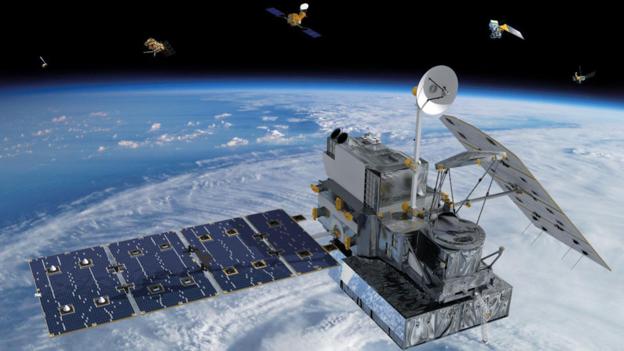
Solar Flare: A Recent Study Says There May Not Be Internet, Technology, Satellites In Next 100 Years
According to a study, it is said that in coming 100 years, there may not be the internet, satellite communication, electric grids, and technology. And the reason behind it is surely not humans. The study says a powerful solar flare in the next 100 years may wipe out all technology on Earth.
A solar flare is a sudden flash of increased Sun’s brightness, usually observed near its surface. Flares are often, but not always, accompanied by a coronal mass ejection.

The flare ejects clouds of electrons, ions, and atoms along with the electromagnetic waves through the Sun’s corona into the outer space. It takes usually a day or two for these clouds to reach Earth. The term is also used to refer to similar phenomena in other stars, where the term stellar flare applies.
Avi Loeb, Harvard University professor who authored the research said, “The sun is usually thought of as a friend and the source of life, but it could also be the opposite.” Manasvi Lingam, a Harvard researcher joined Loeb in the study. They found that extreme flares are likely to occur on stars every 20 million years.

Manasvi studied data on other Sun-like stars to see how frequently superflares occur and what their impact is. The researchers analyzed data on past solar flares. They assessed the likelihood of superspaces, including those that increase the brightness of the Sun by 30 percent and is able to blow the ozone layer on Earth.
NASA defined Solar flare as powerful bursts of radiation from the Sun. Harmful radiation cannot pass through Earth’s atmosphere but when intense, they can disturb the atmosphere in the layer where GPS and communication signals travel. It is said that the worst of flares could even destroy the ozone layer, cause DNA mutations and disrupt ecosystems

“… the risk posed by superflares has not been sufficiently appreciated and that humanity might potentially witness a superflare event in the next 10 to the power 3 years, leading to devastating economic and technological losses,” the study read.
It is believed that during these events, energy is released, is approximately equal to 1036 erg, which is several orders of magnitude higher than normal of solar luminosity (1033 erg/sec). Some solar-type stars astronomers recorded an even more powerful flare up to 1038 erg.

Thus, a solar “superstorm” in 1859 led to the geomagnetic storm known as the Carrington Event. “A flare like that today could shut down all the power grids, all the computers, all the cooling systems on nuclear reactors. A lot of things could go bad. Back then, there was not very much technology so the damage was not very significant but if it happened in the modern world, the damage could be trillions of dollars,” said Loeb.
What’s The Solution?
Loeb and Greg Laughlin from Yale University said a huge loop of conductive wire between Earth and the Sun will act as a magnetic shield. It costs more than $100 billion and it may not be the best way to spend money. “But thinking more about how solar superflares work and getting a sense of how our sun fits in with its peers would be a very valuable effort.”